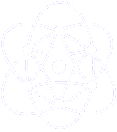Page Generation Type
The page generation type determines the strategy of assembling page content and how to generate the page. The term 'Page Type' denotes the set of parameters and subroutines of a special generation method.
The page types are configured by the web server's 'Page.Type' property. To add a new page generation method, the name of that method must be added to the 'Page.Type' property and the functionality must be integrated in the Maxscape page generation and the management software.
- File
- The content of the database page is stored in a file, whereas the content type of the file defines what to do with it. The file is pointed to, by the category and page name, relative to the 'application servers' document root.
- DatabaseFile
- The page content is stored in database elements of the DATABASE_FILE table. The elements are simply concatenated, when the page is generated. No template is used.
- parsedDatabaseFile
- Behaves like the DatabaseFile generation type. After assembly of the page, the content is additionally parsed by the Perl interpreter by default. Therefor you can embed program variables, application and server software in the text.
- DB-PerlScript
- The Perl code stored in the concatenated database elements is executed. Each element needs to return the text to be displayed.
- Link
- The Link type is the equivalent to a symbolic link of a file system. The URL of the link must be entered in the related META_DATA field of the NODE table.
- DB-Template
-
A page is constructed in a page generation main loop from the pages templates
and elements, whereas the template is fetched from the TEMPLATE table.
Templates are distinguished by their name and grouped by their type.
The DB-Template generation type comes with the following predefined
template types:
- plainTemplate
- ElementTemplate
- plainTemplate
- UserTemplate
To add a new template type, add the template type name to the web server Page.Type.DB-Template property. Then add a new property, named Page.Type.DB-Template.'your template type name and enter the names of your templates. Also, the property Page.Type.DB-Template.UserTemplate.Function has to be set to the name of the function to generate the content, e.g. in the application servers ServerApplication.pm file. Naturally, the templates and the pages using this templates has be created, too.
You may set the Page.Type.DB-Template.UserTemplate.ElementCallback property to an element callback function. See (e.g. make a keyword search for), the ServerGlobalElementCallback and the standardTemplateElementCallback functions of the $Page object. CGI-Template
-
This type is like the DB-Template type, but the template is a function,
and the Template Name appears to be the name of the template function.
The template function must be defined in an application module, included
for example in the ProcessModules.pm or the ServerAplication.pm file.
- HTML-Elements
- Documentation to bee added...
- XML-Elements
- Documentation to bee added...
- Script
- Documentation to be added...
